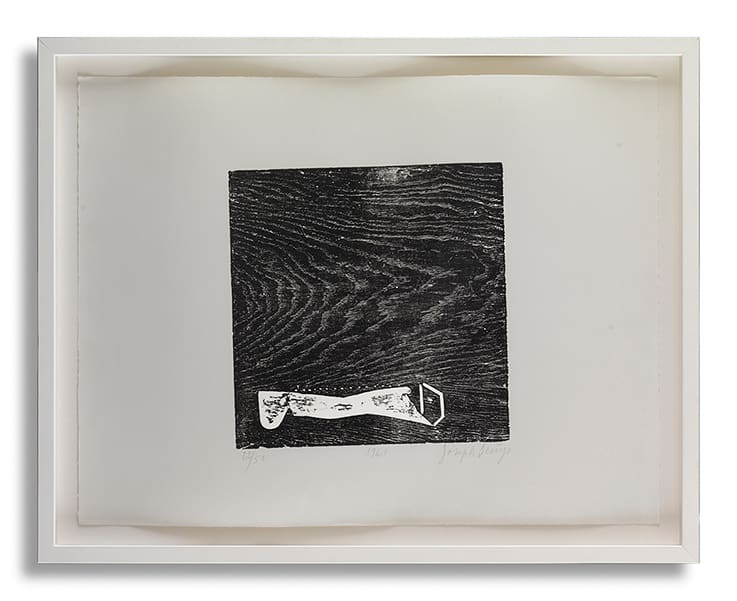Joseph Beuys German, 1921-1986
Untitled, 1961
Woodcut
Image size: 31 x 30.5 cm
Paper size: 50 x 65.5 cm
Signed lower right, dated lower centre
Edition 22/50
Paper size: 50 x 65.5 cm
Signed lower right, dated lower centre
Edition 22/50
Beuys is regarded as one of the most influential artists of the second half of the 20th Century. He was a German Fluxus artist, known for his happenings, performances and...
Beuys is regarded as one of the most influential artists of the second half of the 20th Century. He was a German Fluxus artist, known for his happenings, performances and debates. He equally practiced sculpture, graphics and art theory. His work is conceptual based on humanism, social philosophy and anthroposophy, and concludes in the idea of social sculpture in which he tries to shape society and politics. Beuys's experience as a Luftwaffe pilot during World War II, and his subsequent recount (1979) of his plane crash and his survival became one of the most controversial aspects of his artistic persona. He claimed to have been rescued from the crash by nomadic Tartar tribesman, who had wrapped his broken body in animal fat and felt, and nursed him back to health. This story has served Beuys's artistic identity, as well as providing an initial interpretive key to his use of unconventional materials, amongst which felt and fat were central.
Beuys works are in museums worldwide including: Guggenheim Collection
Hirshhorn Museum and Sculpture Garden, Washington D.C
Museum of Modern Art, New York
National Galleries of Scotland
Tate, London
Walker Art Centre, Minneapolis.
Beuys works are in museums worldwide including: Guggenheim Collection
Hirshhorn Museum and Sculpture Garden, Washington D.C
Museum of Modern Art, New York
National Galleries of Scotland
Tate, London
Walker Art Centre, Minneapolis.
Provenance
Private collection, London.
Join our mailing list
* denotes required fields
In order to respond to your enquiry, we will process the personal data you have supplied in accordance with our privacy policy (available on request). You can unsubscribe or change your preferences at any time by clicking the link in any emails.
